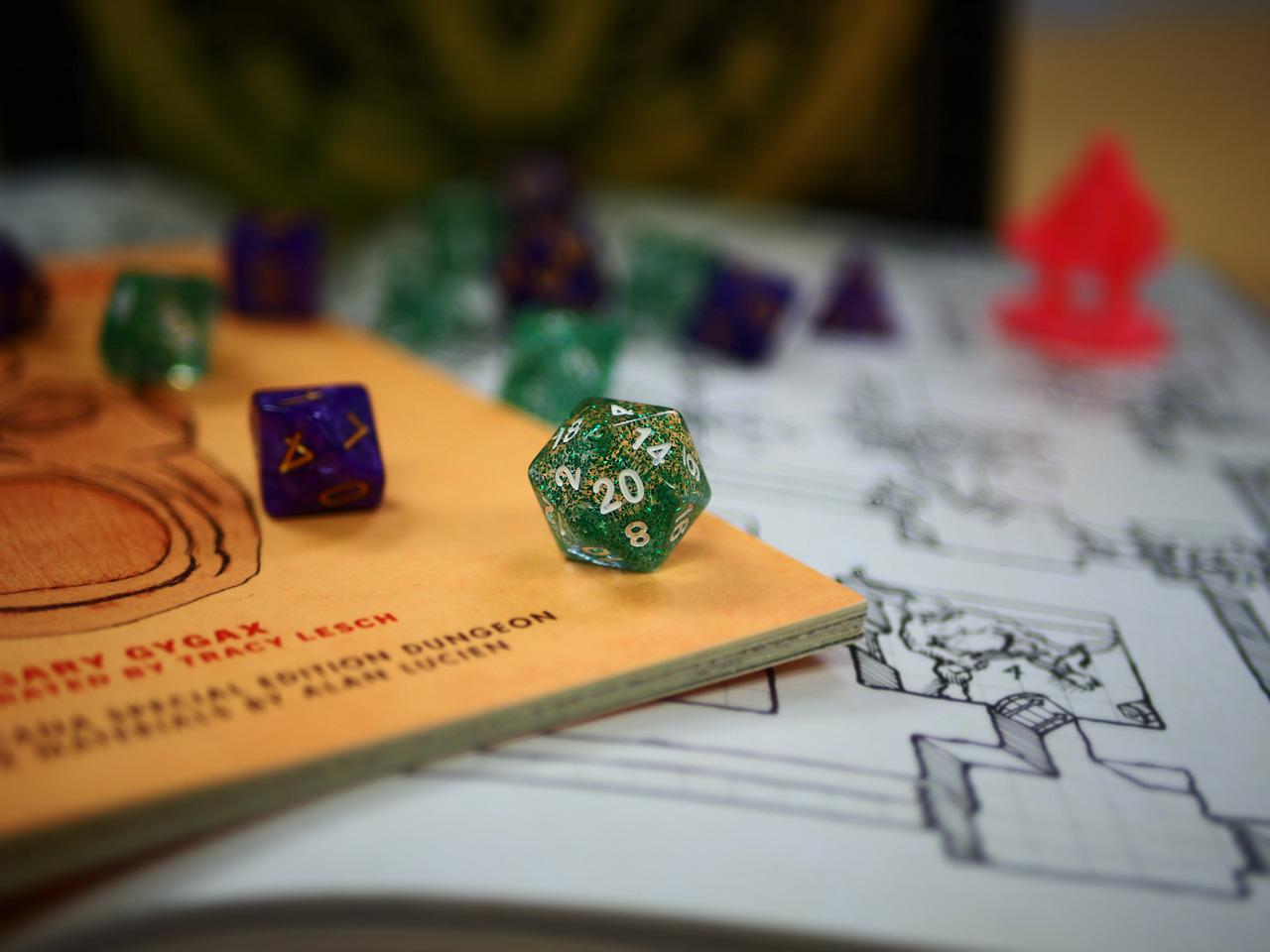A New Player’s Guide to the D&D Alignment System
Getting started on creating a character and their story.

I adore Dungeons and Dragons. I’ve been playing for about two-and-a-half years now, and I can’t get enough of it. However, I struggle with character creation; the paperwork throwing me off. I love to tell a good story and create a believable person to portray, but I also look at the typical character sheet and want to scream. So, I focus on creating a story first and then working in the mechanics.
That’s where alignment comes in.
A Crap Guide to Dungeons and Dragons is an amazing series for players just starting out. Source: YouTube.
What is Alignment?
Alignment is what we call our characters’ main personality indicators. In D&D, we describe these in terms of a three-by-three chart that labels your character as two of the following:
- Lawful
- Chaotic
- Good
- Evil
- Neutral
You may have seen this before with people jokingly placing your favorite TV characters in these charts, or labeling the different ways of holding a cup. It’s a basic categorization system that helps you build out how your character is going to act and react in various situations throughout a campaign, and how they interact with other party members.
Lawful Characters
“Lawful” isn’t exactly what it says on the tin. In simple terms, it means that your character holds a certain code as one of the most important parts of their personality. This doesn’t mean following the law set by whatever government they are under; a lawful character might follow an unbreakable personal code.
Lawful characters get a bad rep as being the “rules lawyer” characters, and that's fair given the definition we’ve just set out, but that doesn’t have to be a bad thing. Most devils and demons are Lawful, but they’re also conniving; if they write a loophole in that you didn’t spot, that’s not their fault, is it? This also makes unexpected actions from Lawful characters more fun — they’re not technically breaking their code if their code doesn’t account for something really specific and off-the-wall.
Chaotic Characters
On the other side of the spectrum are Chaotic characters. Chaotic characters do not follow a distinct or consistent rule set. These are your play-it-by-ear characters whose actions are determined in the moment based on the situation.
This doesn’t mean these characters are going to cause mass destruction, though. A Chaotic character might be a drifter, uncomfortable settling into one place’s routines and expectations. They might be the local recluse, comfortable in one place but not a big fan of people, so shucking off cultural norms until it’s convenient for them. Chaotic characters are more than just “lol xd randumb” sidekicks; they can be fascinating and complex when you ask why they’re so rule-averse.
Good Characters
“Good” in the D&D alignment chart doesn’t mean benevolent. It’s essentially a shorthand way of saying that your character is more concerned with benefiting the group or society rather than themselves alone. They’ll act selflessly, even to the point of their detriment.
Good characters can be fun to explore on the “wrong” side of the equation. A Good villain might genuinely believe that their cruel scheme is the only way to save as many people as possible, even if it means a horrible blood sacrifice ritual or something like that. Everyone is the hero of their own story — you are always the good guy in your own head. Consider playing with that if you’re a DM.
Evil Characters
In the same way that “good” characters aren’t necessarily heroes, “evil” characters aren’t necessarily villains. This alignment is shorthand for a character who is more concerned with serving their own needs than the needs of the larger group or society. They are inherently selfish; these characters will put themselves first, even to the detriment of others.
This doesn’t make them bad, though. An inherently selfish character might decide that they are happiest when their friends are safe, or that they deserve better than to be treated poorly and so they need to set off on their own. It can be an excellent alignment choice for a younger, more inexperienced character or a bitter, previously mistreated character.
Neutral Characters
This alignment sits on both axes of the chart; a Neutral character doesn’t fit into either extreme of the spectrum. This means that in the center of the chart is the True Neutral character. This person doesn’t hold strong beliefs in terms of codes of conduct or in terms of the value of the self versus the community.
People assume that True Neutral characters are boring, but I disagree. I consider True Neutral to be an excellent alignment choice for those whose characters are in the middle of significant growth. That means their ideals are in a state of flux or those who are about to start an arc in which they find out more about themselves.
Combining the Alignment Types
As mentioned in the introduction, when setting up an alignment chart, they will have nine squares made up of three vertical columns and three horizontal rows, with a line each on one axis for Good, Neutral, and Evil and a line each on the other axis for Chaotic, Neutral (again), and Lawful.
The chart will look like the image below:

This creates a two-part alignment name that describes not only how your character acts, but why they act that way.
Let’s look at the top horizontal line of this chart: the Lawful character spectrum. A Lawful character follows a strict code. On the Good side of the spectrum, they follow that code because they believe it’s the best way to benefit the most people. On the Evil side, they follow that code because it’s the best way to benefit themselves above anyone else. In the middle, a Lawful Neutral character follows the code because it is inherently valuable just by virtue of being a code they have given their word to; whether it benefits themselves or a group more is irrelevant to them.
Now, the bottom horizontal line: the Chaotic character spectrum. Again, Chaotic means that this character doesn’t follow a strict, predictable code. Chaotic Good characters will use any means necessary and available to them to benefit the most people possible. Chaotic Evil characters do the same to benefit themselves. Chaotic Neutral characters do whatever they want or feel is best without regard to a system.
The Neutrals in the middle are very interesting; they’re all about balance. A Neutral Good character will help as many people as possible within reason; they won’t go out of their way to break a code but aren’t opposed to doing so if necessary. A Neutral Evil character feels much the same way about helping themselves.

Your Alignment Isn’t Set in Stone
Having just discussed all the interesting things alignments can mean, I think it’s about time that I said something somewhat controversial: your alignment doesn’t matter as much as you think it does.
I mean this in the best possible way; choosing a particular alignment of these nine doesn’t mean that your roleplay has to be restricted completely by these rules. Good characters are allowed to be selfish, and Evil characters can save the day. Lawful characters can be jailed and Chaotic characters can be named Heroes of the Realm. The story you’re telling, not an arbitrary title, should guide your character choices.
That doesn’t mean it doesn’t matter at all. You can definitely use alignment to help you build your character. It can help you ask a lot of good questions — why does my character adhere to these rules? Why are they only out for themselves? What led to their sense of balance? Alignments are like any other archetype; they’re an excellent jumping-off point for making a unique, personalized character.
The wonderful thing about alignments in D&D is that they’re flexible. You can change your alignment as your character grows and develops, and as the game progresses, so that it more closely matches the character you want to play instead of the one you feel you have to play that you may have outgrown or come to discover doesn’t work. Your character is yours, and the most important thing about them is that you are having fun telling their story.
So grab your sheets, pick a square, and go anywhere the story takes you.
Originally posted in the Medium SUPERJUMP Magazine publication on March 8, 2021.
